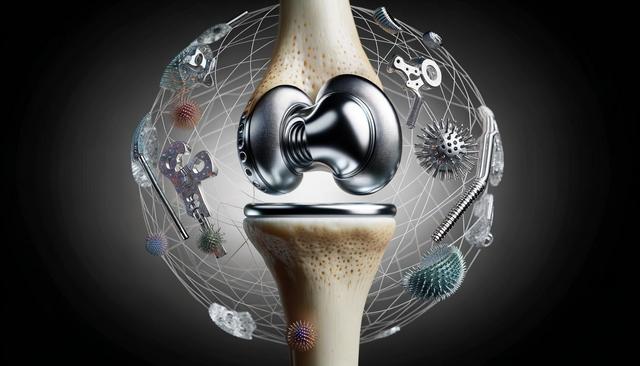Understanding the Potential Side Effects of Knee Replacement
Discover the potential side effects of knee replacement surgery in this informative article. Learn how these effects might impact recovery and daily life. Understand what to expect and how to manage post-surgery symptoms effectively, ensuring a smoother transition back to mobility.

Initial Recovery Challenges After Knee Replacement
Following knee replacement surgery, the body undergoes a significant healing process. In the early stages, patients often experience common side effects such as swelling, stiffness, and pain around the surgical site. These symptoms are typically temporary and can be managed through prescribed medications and physical therapy. However, some individuals may find the initial recovery phase more challenging than expected due to underlying health conditions or limited mobility prior to surgery.
Common early side effects include:
- Localized pain and discomfort
- Bruising and swelling around the knee and leg
- Temporary difficulty in walking or bearing weight
It’s important to follow medical advice closely during this period, including regular icing, elevating the leg, and gradually increasing physical activity. Early rehabilitation exercises help improve joint flexibility and prevent complications such as blood clots. Patients should also monitor for signs of infection, such as increased redness or warmth at the surgical site, and report these to their healthcare provider promptly.
Long-Term Side Effects and Complications
While many patients recover well from knee replacement surgery, there are potential long-term side effects that can affect the overall success of the procedure. One such issue is the development of scar tissue, which may limit knee mobility or cause persistent stiffness. Additionally, some patients may experience chronic pain even after the expected recovery period, though this is less common.
Other long-term complications may include:
- Loosening or wear of the implant over time
- Nerve damage leading to numbness or tingling sensations
- Joint instability or a feeling of the knee ‘giving way’
These issues can sometimes require revision surgery or ongoing physical therapy. Regular follow-up appointments with an orthopedic specialist are crucial to identify and address any of these concerns early. Maintaining a balanced weight and avoiding high-impact activities can also help prolong the life of the implant and reduce the risk of complications.
Infection Risks and How to Minimize Them
Infection is a serious but relatively rare side effect of knee replacement surgery. It can occur either at the incision site or deep within the joint space. While surgical techniques and pre-operative preparations have significantly reduced infection risks, it’s still important for patients to be vigilant during their recovery.
Signs of a possible infection include:
- Fever or chills
- Increased pain or swelling beyond the normal recovery phase
- Pus or unusual discharge from the incision
To minimize infection risks, patients should follow all wound care instructions and avoid submerging the incision in water until it’s fully healed. Healthcare providers may also prescribe prophylactic antibiotics before certain medical procedures, such as dental work, to prevent bacteria from entering the bloodstream and affecting the implant.
Emotional and Psychological Effects
Knee replacement surgery not only affects the physical body but can also have emotional and psychological impacts. Some patients may feel frustrated or anxious about the pace of recovery or concerned about the level of pain they are experiencing. These feelings are valid and common, especially in the first few weeks after surgery.
Common emotional challenges include:
- Postoperative depression or mood swings
- Fear of re-injury or complications
- Frustration with mobility limitations
Support from family, friends, and healthcare professionals can make a significant difference. In some cases, speaking with a counselor or joining a support group for joint replacement patients can be beneficial. Setting realistic recovery goals and celebrating small milestones can also help maintain a positive outlook during the rehabilitation process.
Managing Expectations and Promoting a Successful Recovery
Understanding the potential side effects of knee replacement surgery is essential for managing expectations and promoting a successful recovery. While the procedure often improves quality of life, it requires a commitment to rehabilitation and lifestyle adjustments. Patients who actively participate in physical therapy and follow post-operative guidelines tend to experience better outcomes.
To enhance recovery, consider the following tips:
- Stay consistent with prescribed exercises
- Communicate openly with your healthcare team about any concerns
- Adopt a healthy diet to support healing
- Manage pain with approved medications and non-pharmaceutical methods like heat or cold therapy
A positive attitude and patience are key. Recovery timelines can vary based on age, overall health, and the specifics of the surgery. By understanding what to expect, patients can take proactive steps to minimize side effects and return to daily activities with greater confidence.
Conclusion: Navigating Knee Replacement Recovery with Confidence
Knee replacement surgery can offer improved mobility and reduced pain for many individuals, but being informed about its potential side effects is crucial. From early recovery discomfort to long-term considerations, understanding these challenges allows patients to prepare mentally and physically for the journey ahead. By staying informed, adhering to medical guidance, and seeking support when needed, individuals can navigate the recovery process with greater ease and confidence, ultimately achieving a better quality of life.